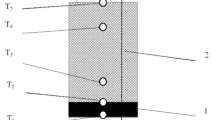Abstract
Functional networks (FNs) are a promising numerical scheme that produces accurate solutions for several problems in science and engineering with less computational effort than other conventional numerical techniques such as neural networks. By using domain knowledge in addition to data knowledge, functional networks can be regarded as a generalization of neural networks: they allow to design arbitrary functional models without neglecting possible functional constraints involved by the model. The computational efficiency of functional networks can be improved by combining this scheme with finite differences when highly oscillating systems have to be considered. The main focus of this paper is on the possible questions arising from the application of this combined scheme to an identification problem when non-smooth functions are involved and noisy data are possible. These issues are not covered by the current literature. An extended version, based on a piecewise approach, and a stability criterion are proposed and applied to the quantitative identification problem in a gas sensing system in its transient state. Numerical simulations show that our scheme allows good accuracy, avoiding the error accumulation and the sensitivity to noisy data by means of the stability criterion.












Similar content being viewed by others
References
Amrani MEH, Dowdeswell RM, Payne PA, Persaud KC (1997) An intelligent gas sensing system. Sens Actuators B 44(1–3):512–516
Beling S, Blaser G, Bock J, Heinert L, Traxler M, Kohl D (1998) Signal conditioning for semiconductor gas sensors being used as detectors in gas chromatographs and similar applications. Sens Actuators B 52:1522
Bruen M, Yang J (2005) Functional networks in real-time flood forecasting: a novel application. Adv Water Res 28:899909
Castillo E (1998) Functional networks. Neural Proc Lett 7:151–159
Castillo E, Cobo A, Gutierrez JM, Pruneda E (1998) Working with differential, functional and difference equations using functional networks. Appl Math Model 23:89107
Castillo E, Gutierrez JM, Cobo A, Castillo C (2000) A minimax method for learning functional networks. Neural Proc Lett 11(1):39–49
Castillo E, Fontenla Romero O, Guijaro Berdinas B, Alonso Betanzos A (2001) A measure of noise immunity for functional networks. IWANN 2001 Proceedings, Spain
Castillo E, Iglesias A, Ruiz-Cobo R (2005) Functional equations in applied sciences. Elsevier, Amsterdam
Chaturvedi DK, Mohan M, Singh RK, Kalra PK (2003) Improved generalized neuron model for short-term load forecasting. Soft Comput 8:10–18
El-Sebakhy EA, Abdulraheem A, Ahmed M, Al-Majed A, Raharja P, Azzedin F, Sheltami T (2007) Functional network as a novel approach for prediction of permeability in a carbonate reservoir. SPE Proceedings, Bahrain
El-Sebakhy EA (2009) Software reliability identification using functional networks: a comparative study. Expert Sys Appl 36(2):4013–4020
El-Sebakhy EA (2011) Functional networks as a novel data mining paradigm in forecasting software development efforts. Expert Sys Appl 38:21872194
Gulbag A, Temurtas F (2007) A study on transient and steady state sensor data for identification of individual gas concentrations in their gas mixtures. Sens Actuators B 121(2):590–599
Happel B, Murre J (1994) Design and evolution of modular neural network architectures. Neural Netw 7:985–1004
Iglesias A, Arcay B, Cotos JM, Taboada JA, Dafonte C (2004) A comparison between functional networks and artificial neural networks for the prediction of fishing catches. Neur Comput App 13:2431
Kato K, Kato Y, Takamatsu K, Udaka T, Nakahara T, Matsuura Y, Yoshikawa K (2000) Toward the realization of an intelligent gas sensing system utilizing a nonlinear dynamic response. Sens Actuators B 71:192–196
Kennedy RF, Nahavandi S (2008) A low-cost intelligent gas sensing device for military applications. CISP 2008(Proc 4):3–8
Lucci M, Reale A, Di Carlo A, Orlanducci S, Tamburri E, Terranova ML, Davoli I, Di Natale C, DAmico A, Paolesse R (2006) Optimization of a NOx gas sensor based on single walled carbon nanotubes. Sens Actuators B 118:226–231
Penza M, Rossi R, Alvisi M, Serra (2010) Metal-modified and vertically aligned carbon nanotube sensors array for landfill gas monitoring applications. Nanotechnology 21:1–14
Press WH, Teukolsky SA, Vetterling W, Flannery BP (1992) Numerical recipes, 2nd edn, Cambridge University Press, Cambridge
Rajasekaran S, Thiruvenkatasamy K, Tsong-Lin L (2006) Tidal level forecasting using functional and sequential learning neural networks. Appl Math Model 30:85103
Tomasiello S (2011) A functional network to predict fresh and hardened properties of selfcompacting concretes. Int J Numer Methods Biomed Eng 27(6):840–847
Vlachos D, Avaritsiotis J (1996) Fuzzy neural networks for gas sensing. Sens Actuators B 33(1–3):77–82
Vlachos DS, Fragoulis DK, Avaritsiotis JN (1997) An adaptive neural network topology for degradation compensation of thin film tin oxide gas sensors. Sens Actuators B 45(3):223–228
Zhou Y, Jiao L (2005) Application of functional networks to solving functional equations. Neural Netw Brain 3:1378–1383
Acknowledgments
This work was partially supported by the MiSE (Italian Ministry of Economic Development) under the project SENSATIONAL—FABRICS INTEGRATED WITH GAS NANOSENSORS FOR PERSONAL PROTECTIVE EQUIPEMENT PRODUCTION (MI 01-00070). The authors are indebted to Prof. Maria Letizia Terranova and Dr Francesco Toschi for hepful discussions on SWCNT based sensors and for experimental data.
Author information
Authors and Affiliations
Corresponding author
Additional information
Communicated by V. Loia.
Rights and permissions
About this article
Cite this article
Acampora, G., Gaeta, M. & Tomasiello, S. An extended functional network model and its application for a gas sensing system. Soft Comput 17, 897–908 (2013). https://doi.org/10.1007/s00500-012-0951-0
Published:
Issue Date:
DOI: https://doi.org/10.1007/s00500-012-0951-0




